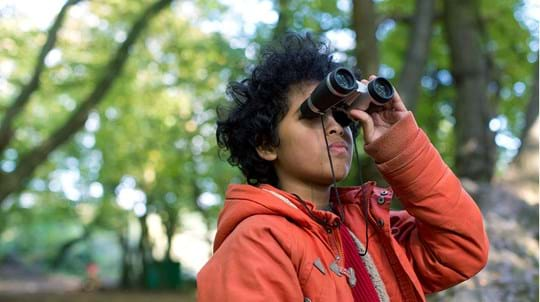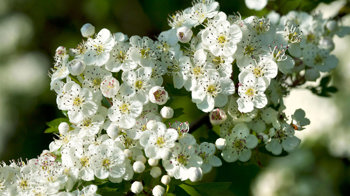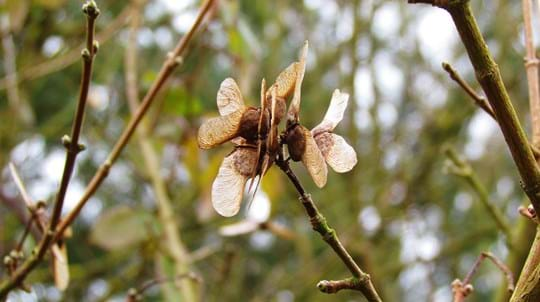
Penguin Wood at Botany Bay
Adjacent to Top Wood

Woodland Trust wood
38.81 ha (95.90 acres)
SK260150
Explorer 245
OS Landranger 128
This young wood extends the nearby National Forest and enhances the local wild flower and woodland heritage of the area.
Visit in spring and enjoy the stunning wildflower meadows, blossoming cherry trees and birds and butterflies that come here. We named the wood after Penguin Books – our partners who helped us create it.
Features
- Parking nearby
- Public access
- Grassland
- Broadleaved woodland
How to get to Penguin Wood
The site covers 38.8 hectares (96 acres) of what had previously been agricultural land between the villages of Linton, Rosliston and Coton in the Elms in South Derbyshire.
From Burton-on-Trent, head east on Dallow Street towards Horninglow Road/A511. Continue on the A511, driving from Stapenhill Road and Rosliston Road towards Rosliston. Turn left onto Rosliston Road South and then continue onto Burton Road. Then, turn left onto Main Street and at the roundabout, take the first exit onto Linton Road.
The main entrance is off Linton Road, around 100m to the east of Botany Bay Farm. On the left hand-side you’ll see a kissing gate and entrance sign for the wood. There is no parking immediately adjacent to the property and access is unsuitable for wheelchairs.
The nearest railway station is in Burton upon Trent, approximately 8km (5 miles) away.
Visit National Rail for more information.
There are no bus stops close to the wood. However, there is a bus service from Burton upon Trent to Rosliston and from Swadlincote and Ashby-de-la-Zouch to Linton. Both involve a walk of around 1.6km (1 mile).
Visit Traveline for more information.
Facilities and access
A pedestrian entrance is located in the far north-west corner of the site on Rosliston Road, 50 metres south from the entrance to the car park at Beehive Farm fishing lakes.
There is also an entrance opposite the lane from Park Farm close to Botany Bay Farm.
Parking is difficult close to the site but you can park at Beehive Farm fishing lakes, around 800m from the wood.
The nearest public toilets are at Woodville Road, Overseal, around 5km (3.1 miles) away. They are open seven days a week during daylight hours, and have disabled amenities.
Wildlife and habitats
Animals
Though Penguin Wood is still relatively young, it is home to plenty of wildlife, especially birds and butterflies; and as the wood grows and develops, it will attract even more.
Trees, plants and fungi
In 2007, around 8,000 trees and shrubs were planted, including field maple, hazel, hawthorn and rowan.
As well as the trees and woodland, in summer you will also see poppy-filled meadows and perennial wild flowers such as meadowsweet, lady’s bedstraw and self-heal in bloom.
Habitats
There is a variety of habitats to discover, and these will develop as the area matures.
The southern section is mainly grassland that’s grazed by cattle, while the northern section is young, broadleaved woodland.
We bought the site in 2007 as part of the ‘Tree for All’ project. The project saw children plant 12 million trees over five years throughout the UK.
History of Penguin Wood
The land here originally formed the bulk of Botany Bay Farm, which is now a livery, and was a mix of established dairy pasture and arable fields. While the history surrounding Botany Bay Farm is unclear, many believe that a local man was transported to Australia, subsequently made his fortune and returned to South Derbyshire, creating Botany Bay Farm.
We named the wood after Penguin Publishing House. They, along with the National Forest Company, funded the 'Trees for All' project.
Things to do in Penguin Wood

Visiting woods
Walking dogs in our woods
Dogs are welcome for walkies in our woods. Take a look at our tips and guidelines for ensuring we keep our woods safe and special for dogs and wildlife.

Visiting woods
Events
Discover events at our woods and the festivals and fairs you can find us at soon.

Visiting woods
Things to do in the woods
Go on an adventure. Get closer to nature. Uncover history. Discover ways to explore the UK's woods whatever the season.



















